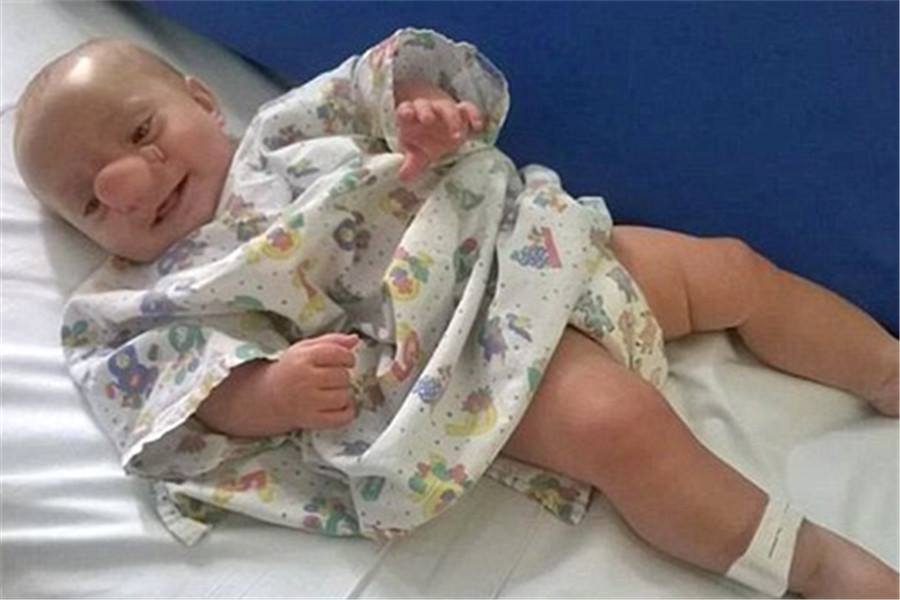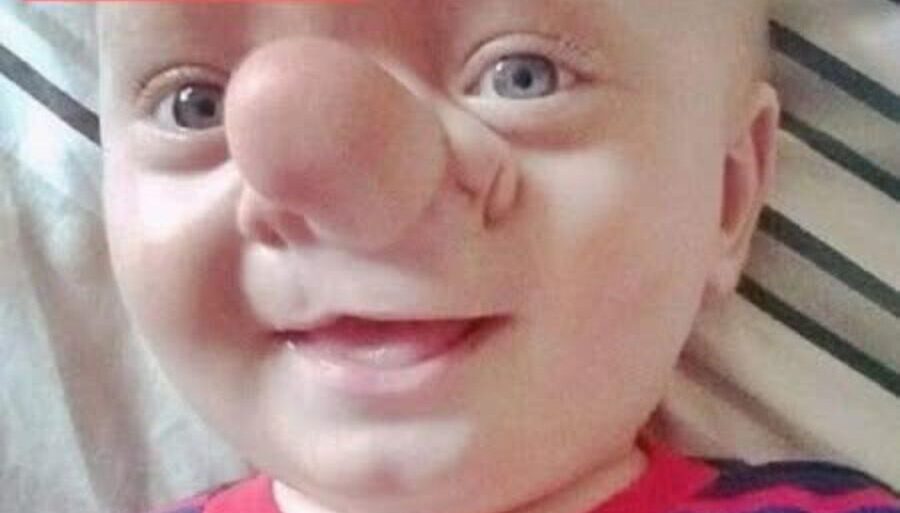Little Olli Tresiz’s story is one of resilience, medical innovation, and the challenges of living with a rare and complex condition. From the moment he entered the world, Olli was unique. Born with a condition known as encephalocell, his life was marked by a medical anomaly that set him apart from others. Encephalocell, a term derived from “encephalo” (relating to the brain) and “cell” (referring to cellular or tissue growth), is an extraordinarily rare condition that involves abnormal development or protrusion of brain tissue, often in conjunction with other cranial or facial structures. In Olli’s case, this condition manifested in a way that made his nose a focal point of concern.
The Early Signs of Encephalocell
As Olli grew, so did the challenges associated with his condition. His nose, which was intricately connected to the abnormal tissue growth, began to exhibit unusual characteristics. It was not just a cosmetic difference; the structure of his nose was directly linked to the encephalocell, making it fragile and highly susceptible to injury. Even the slightest bump or scratch could have catastrophic consequences. The doctors explained that any injury to this area could create a pathway for bacteria to enter, potentially leading to life-threatening infections such as meningitis—a condition where the protective membranes covering the brain and spinal cord become inflamed.

The Risks and Complications
Meningitis is a serious medical emergency, and for Olli, the risk was ever-present. The proximity of the encephalocell to his nasal passages meant that any breach in the skin or tissue could allow pathogens to travel directly to his brain. This made everyday activities, such as playing or even a minor fall, potentially dangerous. His parents were constantly vigilant, ensuring that Olli was protected from harm, but the fear of an accidental injury loomed large.
The Medical Recommendation
Recognizing the gravity of Olli’s situation, a team of specialists convened to discuss the best course of action. After thorough evaluations, including imaging studies and consultations with neurosurgeons, craniofacial experts, and infectious disease specialists, the doctors concluded that a surgical intervention was necessary. The procedure aimed to address the abnormal tissue growth, reduce the risk of infection, and provide Olli with a better quality of life.

The surgery would involve carefully removing or reshaping the encephalocell tissue while ensuring that the surrounding structures, particularly those connected to his nasal passages, were protected. The goal was not only to mitigate the risk of meningitis but also to improve Olli’s overall health and well-being. The procedure was complex and carried its own set of risks, but the medical team believed it was the best chance Olli had to live a safer, more normal life.
The Emotional Journey
For Olli’s family, the decision to proceed with surgery was fraught with emotion. On one hand, they were hopeful that the procedure would give their son a chance to thrive without the constant fear of infection. On the other hand, the thought of their little boy undergoing such a complex operation was terrifying. They leaned on the support of their medical team, who provided reassurance and detailed explanations of the process, as well as the potential outcomes.
The Road Ahead
As Olli prepared for surgery, his story became a beacon of hope and a testament to the power of modern medicine. His condition, though rare, highlighted the importance of specialized care and the need for continued research into complex medical anomalies. The medical team worked tirelessly to ensure that every detail of the procedure was meticulously planned, from the surgical approach to the post-operative care.

Olli’s journey is far from over, but his courage and the dedication of his medical team offer a glimpse into the possibilities of overcoming even the most daunting challenges. His story serves as a reminder of the resilience of the human spirit and the incredible advancements in medical science that make such journeys possible.
In the end, Little Olli Tresiz’s life is not defined by his condition but by the love, care, and determination that surround him as he navigates this unique path. His story continues to inspire those who hear it, shedding light on the complexities of rare medical conditions and the hope that lies in the pursuit of solutions.

